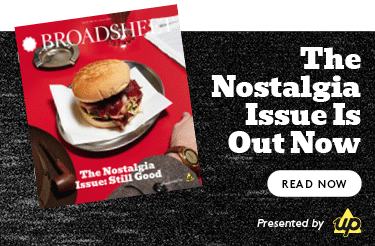Whoever said “the best things in life are free” either didn’t like food or doesn’t know how to throw a good dinner party. Take it from someone who equates self-love with purchasing niche food items – currently on rotation: black truffle squid ink salami ($10/100g), dandelion root tea ($14) and prepared crab meat ($12).
Unfortunately, in times of economic fragility, it’s tricky to justify spending money on such pleasures. For the rare diehard host, biting the bullet and dipping into the emergency fund can be worth it for a special occasion. But as much as I can tolerate the post-party financial anarchy, there’s no real excuse for spending rent money on oysters. This month, I put my self-control to the test: one pineapple-hued bill, four people, a three-course dinner – here’s what I learnt.
What's in my pantry?
Before you step outside into the money-leeching world of $2.20 per litre for fuel and $25 sandwiches, look at what you already have. Any surplus ingredient is golden: a weird amount of spare lasagne sheets? An almost-stale box of shortbread from Christmas? Way too much risotto rice?
All these ingredients can be fashioned into an interesting and delicious dish with its own unique set of bragging rights (“This tiramisu is made with sewing-box biscuits from 2018!”). If in doubt, the internet will have recipes and answers.
Don’t forget that you can and should use what you buy week to week. I always have milk and good butter, onions, garlic and other pantry staples like canola oil, mayonnaise, sugar and vanilla extract on hand. Think about what dishes are possible with these ingredients while keeping the shopping list under 10 items. The result? $40 for a delicious and economical meal of sage cream roast chicken and cabbage (recipe below), onion fritti (aka a blooming onion) with sour cream and chives, and roasted rhubarb with vanilla custard.
Bigger is sometimes better
Hear me out: sometimes, more food costs less money. “Processed” vegetables and meat – pre-cut or marinated – always cost more, especially when it comes to meat and seafood. I always opt for larger cuts of meat that I can break down. (I freeze any excess to use later.) Cuts like short rib, unportioned steaks, lamb leg and pork shoulder have a good cost-per-serve ratio. Whole fish always does your dollar justice and is far more impressive on the table. I am perpetually spreading the good word about whole chicken – there is so much you can do with a single chicken (meat, fat and bones) and it can feed up to four.
Phone a friend(s)
When I have more than four mouths to feed, I always ask people to chip in. You’d be shocked to discover how far $15 or $20 per head stretches. People are usually more than willing because, at the end of the day, they get to come to a supper party and eat a great meal – all for the cost of tuna crudo at a mid-tier Italian restaurant. Finally, the budget supper party isn’t complete without a last-minute group chat reminder to BYO and BSI (bring some ice).
Recipe: Sage cream roast chicken and cabbage
Serves 4
Preparation time: overnight seasoning plus 10 minutes
Cooking time: 80 minutes
Ingredients
1 whole chicken
Salt
¼ cup mayonnaise
½ head of cabbage, quartered lengthwise
2 tbsp extra-virgin olive oil
½ cup cream
15-20 fresh sage leaves, roughly chopped
1 clove garlic, grated
Pepper
1 cup dry white wine or sherry
½ lemon for juicing (optional)
Method
For the best-tasting chicken, salt it generously all over (in the cavity as well) and leave uncovered in the fridge overnight, or at most for two days.
Preheat oven to 220°C. Rub the seasoned chicken with mayonnaise all over, including underneath. Roast for 20 minutes in a pan (with a roasting rack if you have one).
Meanwhile, season and sear cabbage wedges with oil in an oven-proof pan until charred on all sides.
Combine cream, sage, garlic, pepper and a pinch of salt in a small bowl and set aside.
Put the cabbage in the oven on a rack underneath the chicken, uncovered.
After 20 minutes, remove the chicken from the oven (leave the cabbage in the oven). Pour the sage cream over the chicken, and pour the white wine or sherry into the pan, then lower the oven temperature to 150°C and return the chicken to the oven.
Once cooked (it takes between 25-40 minutes), remove chicken from the oven and set aside to rest. Remove cabbage from the oven at the same time and pour the chicken pan juices over the cabbage. With tongs, flip the wedges over so they’re evenly coated. Return cabbage to oven for a further 10-15 minutes.
Carve the chicken. Plate both chicken and cabbage. I like to leave the cabbage in wedges as it’s easy to serve. Make sure to dress both dishes with residual juices. A squeeze of lemon on the cabbage brightens it up, but it’s just as good without.
Keep up with Becca over on @supper.partying






